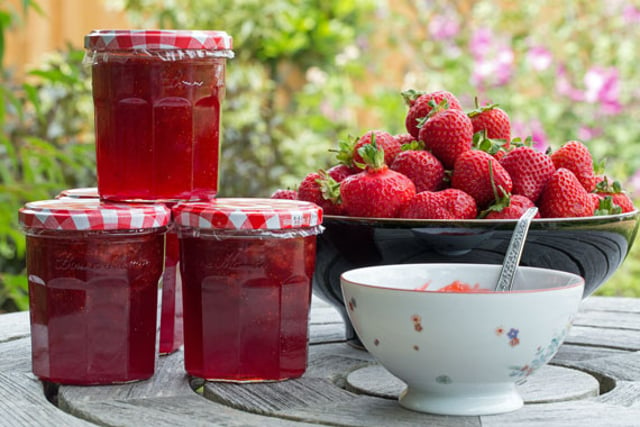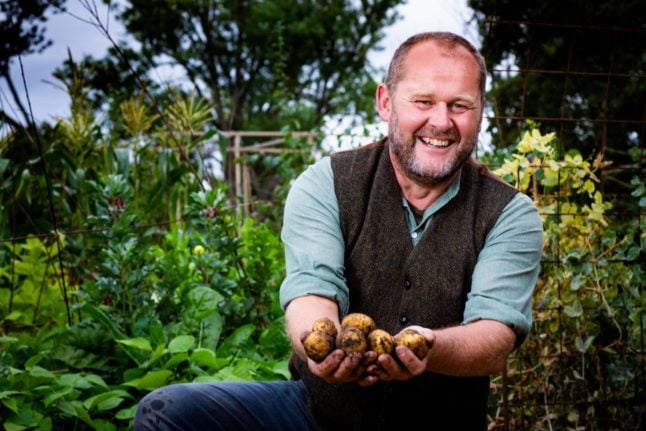When fresh strawberries are at their peak I love to make some jam/compote to keep for later in the year. It is really easy to make, is so much fruitier than most shop bought compotes and it goes with so many things. At the end of the summer, when strawberries are not as plentiful, I recommend making a spiced berry jam using whatever fruits are available!
Summary
Makes: about 3-4 jars
Level: very easy
Preparation: 5 minutes
Cooking: 10 minutes
Total: 15 minutes + plus cooling time
Tips
– Use dark coloured strawberries if possible. The darker their colour the nicer the compote looks.
– If you prefer to keep the strawberries whole, use a drinking straw to push the stalk off the strawberries and then add the sugar, leave overnight and then go straight to step 4. (The sugar will then draw out the juices and firm the fruit.)
– Try and avoid washing the strawberries or using strawberries after it has rained heavily and the fruit is wet – the fruit needs to be as dry as possible. If you are forced to wash the fruit, dry it and spread it out on clean tea cloths to dry further before using. (Any extra moisture will dilute the pectin and make the compote too runny.)
– If you are new to making jam, check out our top tips for homemade jam.
Ingredients
1 kg strawberries
1 lemon, juice only
1 kg jam sugar
1 tsp butter, if required
Method
1. Wipe the strawberries clean, hull them and then put them in a large heavy bottomed saucepan or preserving pan.
2. Heat gently for 2 or 3 minutes, stirring occasionally until the strawberries soften slightly. (Don't stir too much or the fruit will disintegrate.)
3. Add the sugar and stir occasionally until it dissolves.
4. Add the lemon juice and then bring to the boil and then boil steadily for 3 minutes for sylt (a runny consistency) or 6 minutes for a firmer set. (Don’t be tempted to go beyond 6 minutes without testing for a setting point, as you may end up with a compote that is over-set and has less flavour.)
5. Remove the scum from the surface with a slotted spoon and then, if there is still some scum left, add a small knob of butter as this helps to disperse any remaining scum.
6. Allow the compote to cool for 15 minutes and then stir and ladle into sterilised jars and cover. Use within 12 months.
Serving suggestions
Strawberry compote is particularly popular in Sweden with pancakes and waffles.
Recipe published courtesy of John Duxbury, founder and editor of Swedish Food.




 Please whitelist us to continue reading.
Please whitelist us to continue reading.
Member comments